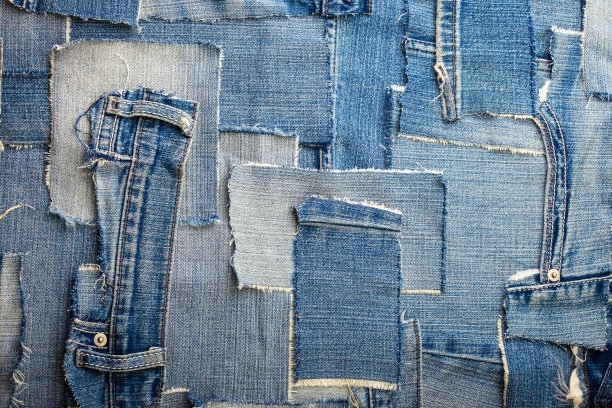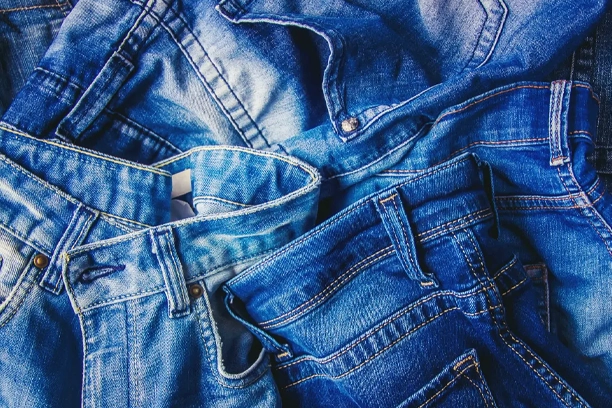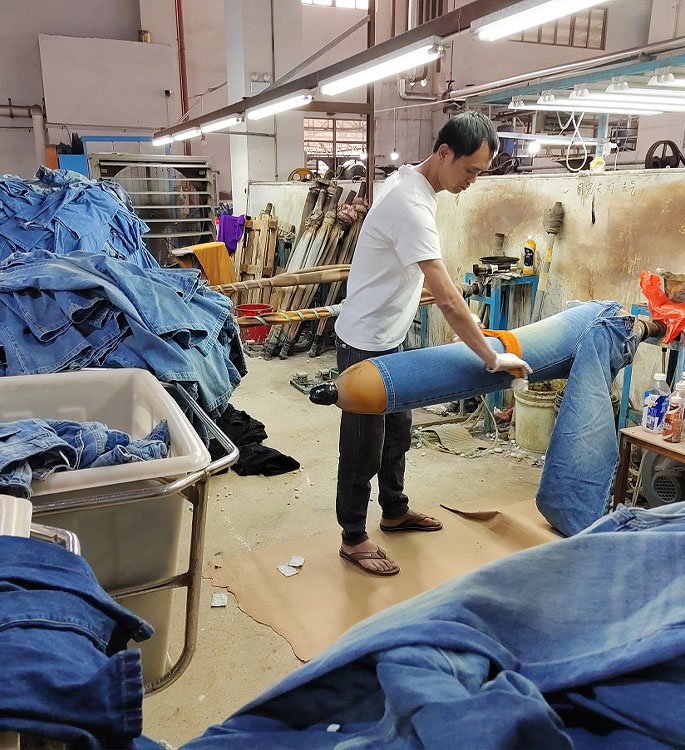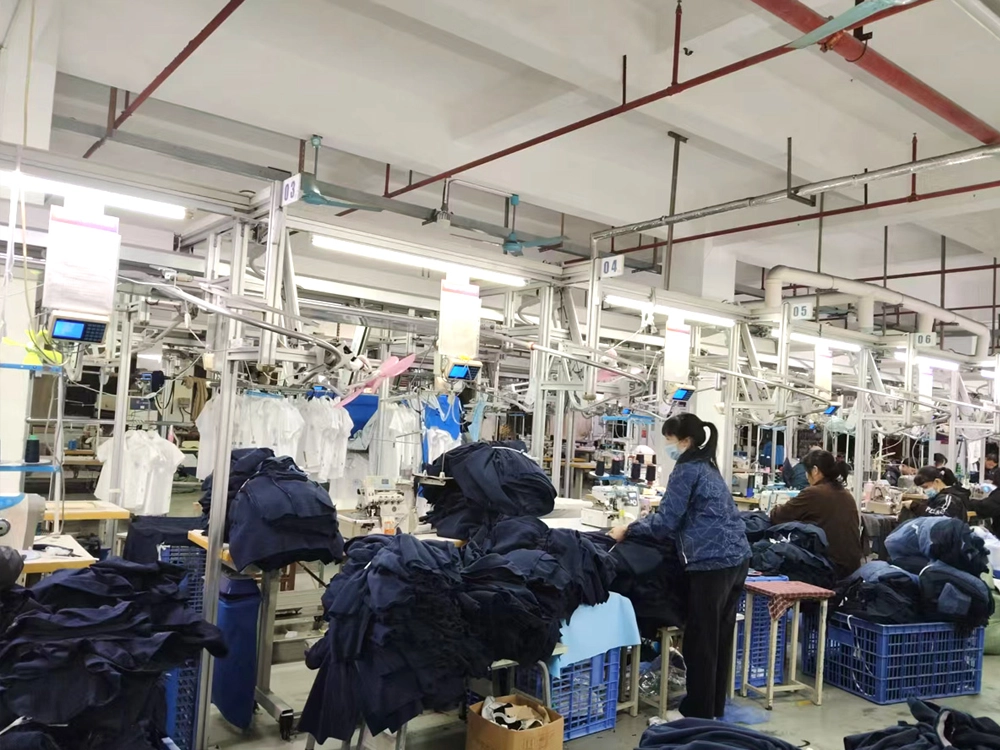Don't miss our holiday offer - up to 50% OFF!

what is denim? Where are the manufacturers of cowboy clothing?
What, exactly, is denim, however? Where did this fabric come from, and why has its popularity endured unabated throughout the decades? We’ll dive into all these questions and more as we tell you everything you need to know about denim fabric.
In simple terms, denim is a durable, sturdy cotton fabric, most famous for its use in blue jeans. But it’s much more than just the material of your favorite pants.
Denim is one of the most popular and durable fabrics in the world. Initially, the work clothes for workers were made from it. Traditionally, denim was a fabric made from cotton in a twill weave and dyed with indigo. Today, there are numerous types of jeans on the market. In addition, different surface finishes are used, such as coating and printing. These increase functionality and aesthetics and add value to denim.

Denim has now become a staple of men’s fashion today, crossing generations, cultures, and styles. Whether for a casual event, smart-casual gathering, or even an outdoor meeting, this fabric is a common outfit among men.
The material is naturally colored with indigo dye to produce the blue denim color. But how did denim, that tough fabric, become a timeless part of men’s fashion? From workwear to exquisite design creation, jeans have come a long way. Let’s get into the article to see more about this iconic fabric.

The History of Denim: From Workwear to Fashion Icons
When denim first appeared in the 1980s, they made the denim fabric extremely tough and suitable for men at work. The producers added more stitches and rivets to help make them be used in the long run. In the 20th century, during the times of Hollywood stars like Marlon Brando and James Dean, things have taken a new interesting turn as denim became fashionable pieces.
The fashion revolution of denim has transformed it into everyday wear with different variations from ripped jeans, stretchy jeans, bell bottoms, and others. Check out the best 5 stretch jeans for 2025.
Even designer wear companies have jumped on denim, and luxury and designer jeans also attract a higher fashion audience. It has gone from being a functional item to a fashion icon, showing that jeans can be both functional and stylish.
How Denim Is Made: From Cotton to Clothing
What is Denim? Denim is a twilled cotton fabric that is very hardy. It has been used in fashion for hundreds of years, especially in the form of jeans and jackets. The manufacture of denim is a process of several stages from cotton farming.
The cotton fibers are pulled off from the boll and are spun into threads. But first, the Cotton fibers are carded to remove the impurities and drawn to an even length. Fibers are then spun into yarn and this is to provide them with the strength and elasticity that they require to be woven.
The next step is dyeing the yarn in the indigo dye through the “rope dying” process. This produces the traditional look of denim and its fading pattern and after that, the denim undergoes weaving which creates the traditional blue face with a white back.
Weaving is an important process that gives denim its recognized appearance. Lastly is the finishing which involves a lot of processes like Sanforization, washing, and softening, then the fabric is pressed and cut into different shapes and sizes.
Why is Denim Blue
Denim’s characteristic blue coloration can be attributed largely to the indigo dye. Indigo is a natural dye that has traditionally been produced from the indigo plant but is increasingly being supplemented by synthetic indigo these days. Denim has traditionally been known as “denim blue. This dyeing gives denim its signature color and texture.
Indigo is used in denim because of its chemical property that makes the dye extremely fade-resistant. Denim is strong and durable, serving as both heavy-duty work wear and daily comfortable wear. Its twill weave gives the fabric the strength of resistance to tearing as well as fraying.

The Key Characteristics of Denim:
- The Weave (What Makes it Unique):
Denim is woven using a twill weave. This technique creates the familiar diagonal ribbing or pattern on the fabric’s surface. This is why you can see subtle parallel lines on a pair of jeans. The twill weave is what gives denim its exceptional strength and durability. - The Color (The Classic Look):
Traditionally, denim is made from yarn that is dyed indigo blue on the outside and left white on the inside. This is why blue jeans are blue on the outside and have a white underside. The iconic fading of jeans occurs as the blue indigo yarn wears away over time, revealing the white core underneath.
How is Denim Made?
The unique color and feel of denim come from a specific manufacturing process:
- The Yarn: The foundation is strong cotton yarn.
- The Dyeing (The Secret to Fading): Traditionally, only the warp threads (the vertical threads) are dyed with indigo. The weft threads (the horizontal threads) are left white.
- The Weaving: The dyed warp threads and the white weft threads are woven together on a loom using the twill technique. The blue warp threads dominate the front side of the fabric, while the white weft threads are more visible on the back.
This process is why the inside of your jeans is lighter in color and why they develop unique fade patterns with wear.
Types of Denim Fabrics
Denim is such a big style statement for today’s man. There are four different types we will be considering below:
- Raw Denim: Also known as “Dry Denim”. This type is free from denim washes. It is unwashed and uncleaned after the dyeing process.
- Selvedge Denim: This is another denim type that does not go through denim washes. It is woven on a shuttle loom, usually an indication of higher quality.
- Stretch Denim: This type has a small proportion of spandex or elastane but still has the same look as the denim. The Light indigo stretch jeans are perfect as everyday wear for people who love a comfortable and stylish style.
- Acid-Washed Denim: This is one of the types of denim washes where the cloth is dipped inside an acid. The aim is to give it a faded appearance and that’s the unique style.
Denim & Jeans: What are Jeans made of?
Jeans consist primarily of denim fabric, originally made from cotton. The newer versions with elastane or polyester blends add extra hardness and stretch. Jeans are generally made with metal rivets, a button, and a zipper fly.
Denim is valued for its durability and classic denim look. From the origins of rugged labor work wear to those of a symbol of rebellion, fashion, and independence, denim has stood the test of time. Jeans also have metal rivets, button fly or zipper, and trim stitching details that provide the traditional appearance and functionality of jeans.
Denim: A fashion statement
Whether denim flannel suits, classic denim jackets, or perfectly tailored denim shirts, the fabric oozes masculinity and rough charm in any collection. Some of the reasons to love denim are:
- Durability: Its closely woven cotton makes denim strong and resistant, hence ideal for everyday wear.
- Versatility: It can be paired with almost anything, and men can get different looks without even trying.
- Timeless Appeal: While other fabrics fade easily, denim maintains a unique property of its own typically becoming more timeless even with wear and tear.
- Comfort and Fit: Stretch denim makes contemporary jeans stretchable in addition to fitting snugly, thus even more comfortable.
Caring for Denim: Tips to Make It Last Longer
Denim is a fabric as much as it’s a fashion phenomenon that has driven fashion for decades. To ensure that your denim textiles are durable, keep these essential care tips in mind:
- Wash Less Frequently: Denim washes color away and wears out if washed too much. Spot-clean when necessary and do not wash unnecessarily.
- Wash in Cold Water: Prevent shrinkage and color loss from hot water by always washing in cold water, maintaining color and material properties intact.
- Air Dry Instead of Machine Dry: Denim material can be weakened by machine heat. Air drying doesn’t weaken the material but prevents shrinkage. Also, never use harsh detergent to avoid untimely fading.
- Store Properly: Fold your jeans gently or hang them to prevent creases and maintain their shape.
Where is denim fabric produced?
According to Statista, India is currently the world’s largest producer of cotton. This Asian nation is closely followed by the United States with China in third place. These statistics mark something of an upset in the global manufacturing order; mere years ago, China’s authoritarian regime was the world’s largest cotton producer by a wide margin, but geopolitics have shifted.

How much does denim fabric cost?
Among the natural fabrics, cotton is one of the most inexpensive, and it is even comparable in price to cheap artificial fibers like polyester and rayon. It doesn’t cost that much extra to make cotton yarn into denim, which puts denim fabric in the middle range of fabric pricing.
Certain types of denim, however, can be quite expensive. Raw, organic denim, for instance, can cost dozens of dollars per yard, and in general, cotton products that were produced sustainably and ethically cost slightly more. Supporting good companies is worth the increased cost, however, and consumers are increasingly on the lookout for safe, organic textile products, which provides more profits in the long run.
What different types of denim fabric are there?

Over the years, quite a few forms of denim have been developed. Here’s some information on a few of the most popular options:
1. Raw denim
This type of denim has not been washed or treated. Generally, it is worn for six months to a year without washing to make sure it forms to the wearer’s body. Raw denim enthusiasts often resort to putting their jeans in the freezer overnight to kill off microbes and bacteria.
2. Sanforized denim
Most types of denim have been sanforized, which is the washing process that has resulted in modern denim fabric. While sanforized jeans are softer, they are also less durable, and they aren’t as personalizable as raw denim jeans.
3. Stretch denim
With this type of denim, cotton has been mixed with spandex or a similar material. The resulting fabric is stretchier than normal denim, so it is commonly used in form-fitting applications like skinny jeans.
 Salvaged Clothing Lines
Salvaged Clothing Lines
4. Crushed denim
This type of denim features a weave that’s similar to velvet. It has a permanently wrinkled appearance that makes it appealing for jackets and skirts.
5. Selvedge denim
Selvedge denim has a fringe at the end, and this fabric is commonly used to make jackets.
6. Acid wash denim
This type of denim features an iconic mottled appearance. It’s made by washing raw denim in a strong acid that eats away at the dye.
7. Poly denim
The term “poly denim” is widely used to refer to denim products that are made with a mix of cotton, polyester, and any number of other artificial fibers. Along with polyester, materials like lyocell and nylon are sometimes added to cotton to make denim products. Some purists would say that poly denim is not “real” denim.
How does denim fabric impact the environment?
A variety of factors can affect the way that denim production impacts the environment:

Materials used
As a natural fiber, cotton has the potential to be a non-polluting substance. Like all plant crops, however, corners are often cut to produce higher cotton yields with toxic pesticides and fertilizers.
Much of the denim on the market is contaminated with toxins that could harm your health. What’s more, using chemical fertilizers and petrochemicals in the cotton cultivation process poisons ecosystems and causes health complications in local plant, animal, and human populations.
Moreover, some “denim” products contain percentages of polyester, nylon, or other artificial textile materials. All textiles other than natural fabrics were created from petrochemicals or similarly artificial substances, and these materials release incredibly dangerous toxins into the environment. These toxins are often genotoxic or hormone disruptors, which causes multi-generation genetic damage similar to the mutations observed after exposure to nuclear radiation.
Manufacturing practices
Once the raw materials for denim reach the factory, they may be washed, treated, or exposed to any manner of chemical agents. During this process, human workers may be exposed to airborne or transdermal toxins, and the general rule for overseas labor is that human beings are treated as slaves by major manufacturing corporations to increase profits.
Focus on sustainability
To avoid the negative environmental impact that always results from keeping people in slave-like conditions, it’s necessary to choose manufacturers that focus on free trade and sustainability. A growing number of textile producers around the world are coming into harmony with their communities and nature, and Sewport is the best place to connect with the right textile producer for your next project.
Denim fabric certifications available
There are quite a few organizations that provide certification for denim products. Only a few of these groups, however, are universally respected:
Supima certification
If you produce your cotton in the United States using organic cultivation processes, you might be eligible for Supima cotton certification. This group is highly selective with its licensing, but Supima cotton denim products are renowned the world over for their connoisseur allure.
Cradle to Cradle
This group makes sure that natural textile manufacturers follow struct sustainability and safety standards.

Where are the manufacturers of cowboy clothing
As a leading manufacturer of cowboy clothing, we specialize in high-volume custom orders and bulk wholesale. We offer end-to-end OEM & ODM services for global brands and retailers, producing durable western wear like shirts, jeans, and jackets. Partner with us for competitive pricing, strict quality control, and reliable mass production capacity. Your trusted factory for custom cowboy apparel.


Direct manufacturer for bulk custom cowboy clothing. We empower brands and retailers with large-volume production of authentic western wear, including private label and OEM options. Get competitive factory pricing and reliable fulfillment for your order of cowboy shirts, jeans, and outerwear. Ideal for high-volume partnerships.

[…] What is Denim Made Of? […]
Please review this article.:what is denim made of ,https://www.zenithdenim.com/what-is-denim-made-of/